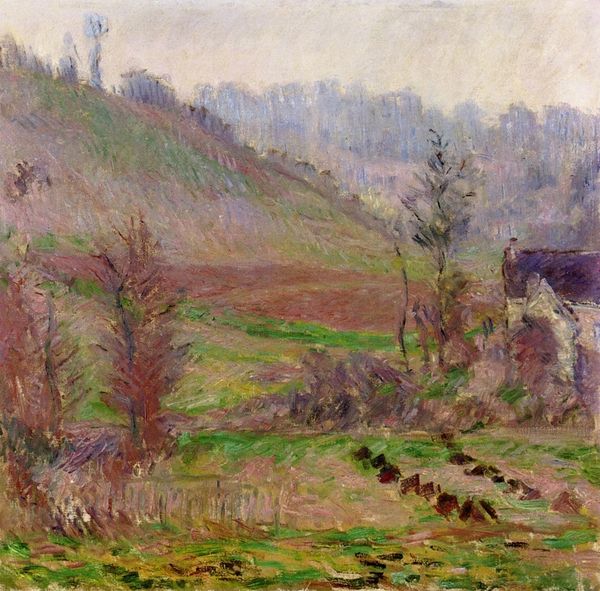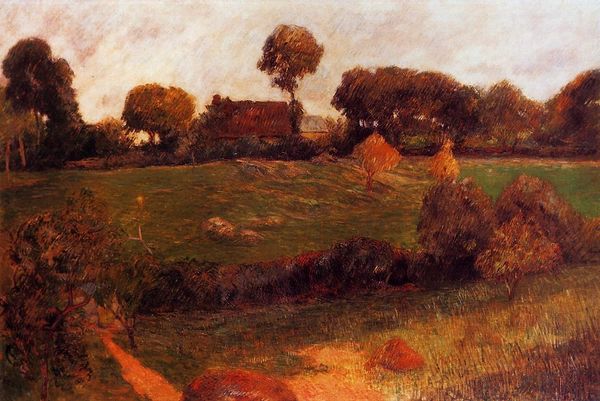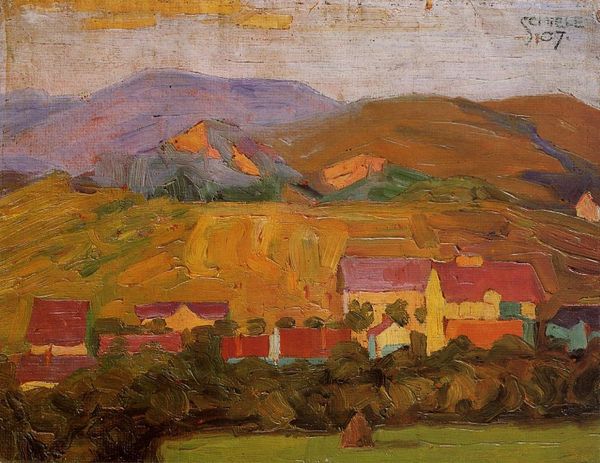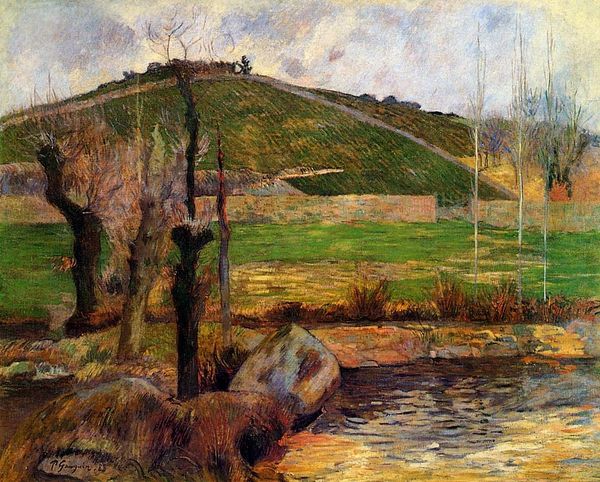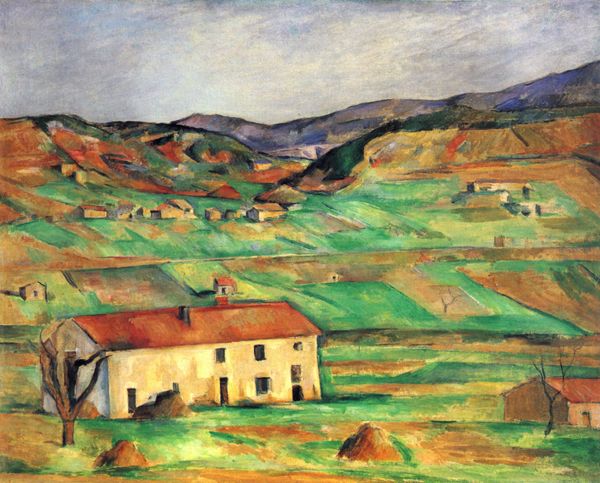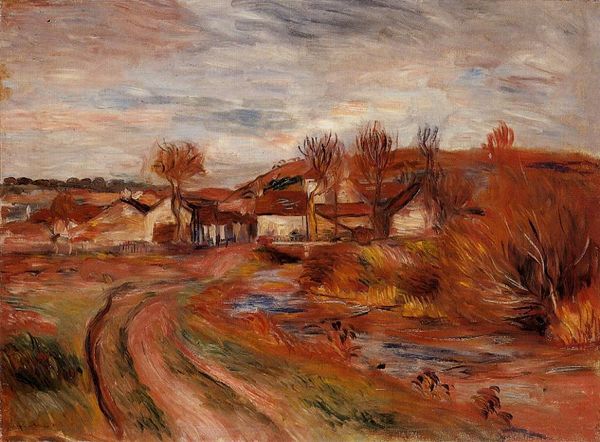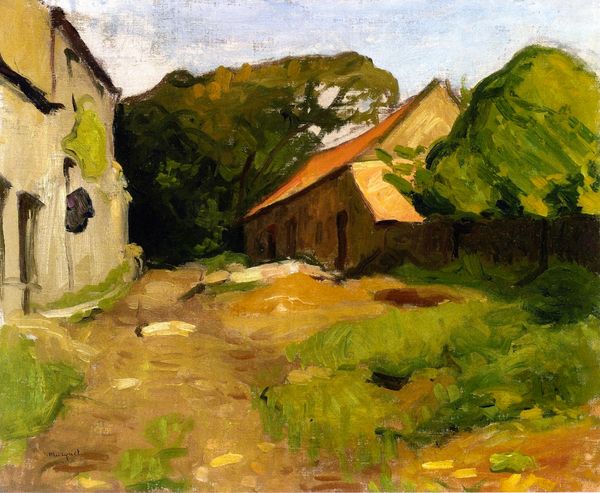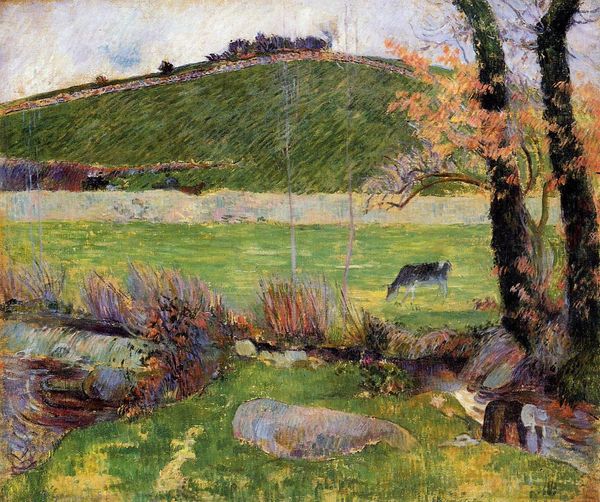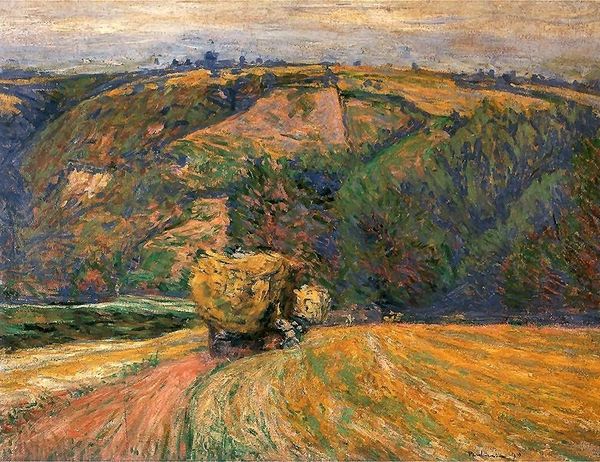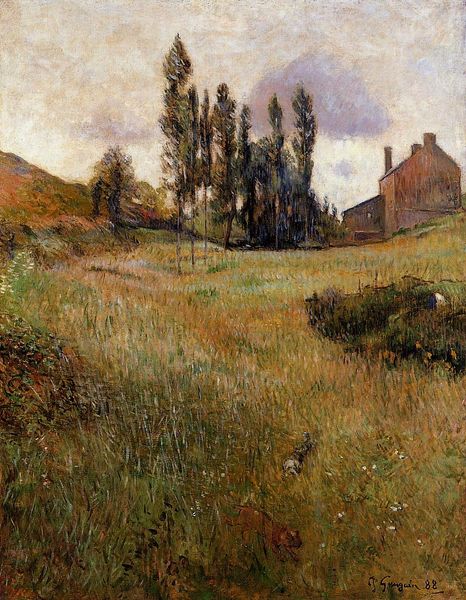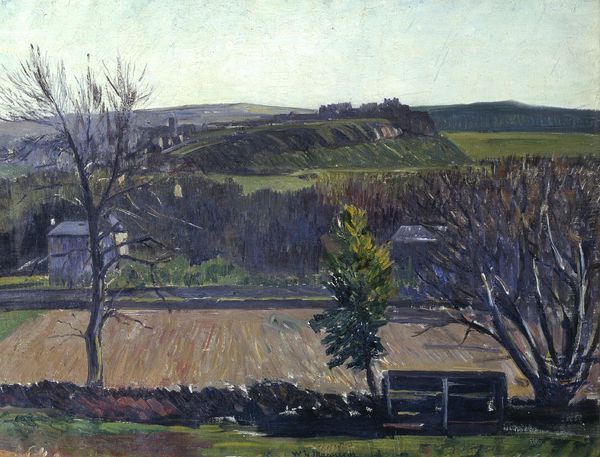
painting, plein-air, oil-paint
#
tree
#
cliff
#
animal
#
rural-area
#
painting
#
impressionism
#
grass
#
plein-air
#
oil-paint
#
landscape
#
house
#
impressionist landscape
#
oil painting
#
rock
#
post-impressionism
Copyright: Public domain
Paul Gauguin painted "Cottages on Mount Sainte Marguerite" in oil on canvas some time before his death in 1903. The painting depicts rural life in a rustic setting of cottages against a hillside. The image creates meaning through Gauguin’s use of simple visual codes, evoking a sense of pastoral tranquility that contrasts with the industrialized world. The artwork, likely produced in France, can be examined within the context of the late 19th century, a period marked by rapid industrialization and urbanization. Gauguin, like other artists of his time, sought refuge in the countryside, idealizing rural life as an escape from the perceived ills of modern society. This embrace of the rural is self-consciously progressive, even as it critiques the values of modern art institutions. Understanding "Cottages on Mount Sainte Marguerite" requires historical research into the social and cultural values of 19th-century France. The role of the historian is to examine and interpret it in relation to its institutional context, revealing the deeper meanings embedded within its idyllic surface.
Comments
No comments
Be the first to comment and join the conversation on the ultimate creative platform.
